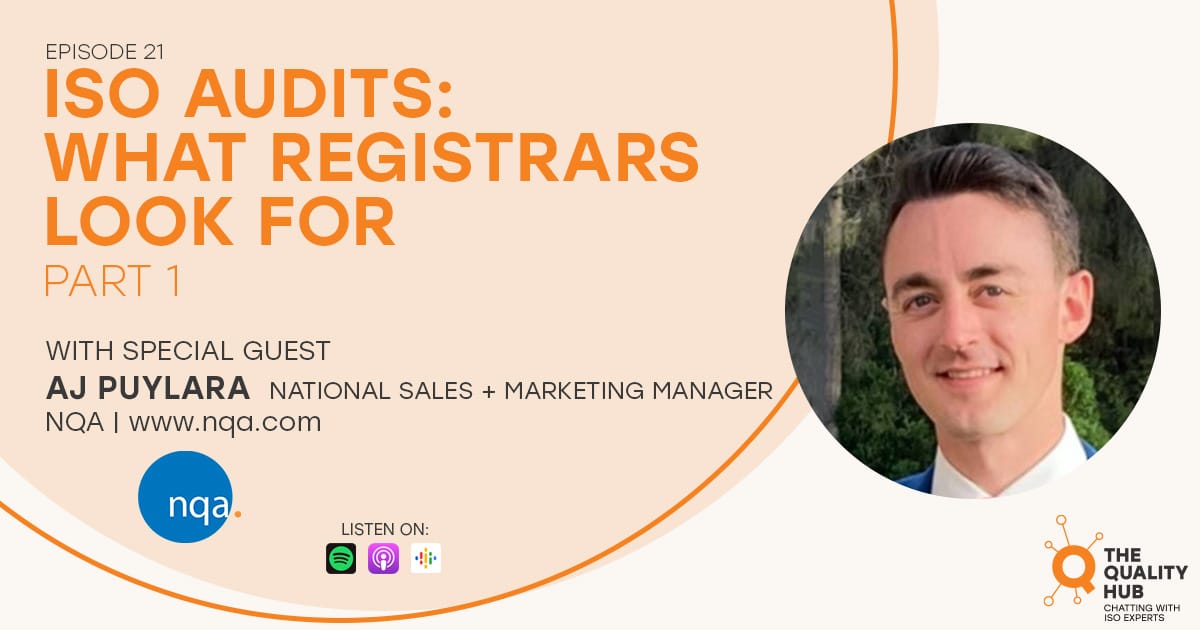Creating an ISO 9001 Audit Checklist
Guide to Creating an ISO 9001 Audit Checklist
Introduction to ISO 9001 Audits
Achieving and maintaining ISO 9001 certification is a major accomplishment for any organization. But certification is just the beginning—the real work lies in continuously upholding the standards that earned you that certification. One of the most important tools in this ongoing journey is the ISO 9001 audit, a systematic and regular review of your organization’s quality management system (QMS).
The purpose of these audits is to ensure that your processes are not only compliant with the ISO 9001 standard but also capable of driving continual improvement. To carry out these audits effectively, a well-prepared checklist is essential.
Get a Free Quote
Why an ISO 9001 Audit Checklist is Essential
Imagine navigating a dense forest without a map. That’s what conducting an ISO 9001 audit can feel like without a structured checklist. An ISO 9001 audit checklist is your guide through the complex layers of your QMS, helping ensure nothing is overlooked. The checklist serves multiple purposes:

- It provides structure and clarity for the auditor.
- It ensures consistency across multiple audits.
- It identifies non-conformances and areas for improvement.
Without a detailed checklist, it’s easy to miss critical elements, leading to gaps in compliance or missed opportunities for strengthening your QMS.
Key Elements of an Effective Audit Checklist
So, what should be included in a robust ISO 9001 audit checklist? Here are the key elements:
Clause-by-Clause Coverage:
Each checklist item should correspond to a specific requirement within the ISO 9001:2015 standard, ensuring that all necessary areas are audited.
Performance Indicators:
Include measurable criteria to evaluate how effectively processes are performing, not just whether they exist.
Evidence Collection:
The checklist should provide space for documenting the evidence that demonstrates compliance.
Action Items:
If non-conformities are found, the checklist should have sections for listing corrective actions and follow-up dates.
An effective checklist is not just a tool for compliance—it’s a blueprint for continuous improvement.
Understanding the Clauses of ISO 9001:2015
To create a useful audit checklist, it’s critical to understand the clauses within the ISO 9001:2015 standard. Here’s a brief overview:
Clause 4: Context of the Organization:
Evaluates how well the organization understands the internal and external factors that affect its operations.
Clause 5: Leadership:
Assesses top management’s role in driving the QMS, including setting objectives and demonstrating commitment.
Clause 6: Planning:
Reviews how risks and opportunities are managed, and whether the QMS is aligned with the strategic direction.
Clause 7: Support:
Checks if resources, communication, and documented information are adequate for maintaining the QMS.
Clause 8: Operation:
Examines the processes that deliver products or services, ensuring they are controlled and effective.
Clause 9: Performance Evaluation:
Focuses on how the organization measures and analyzes its performance, including internal audits and management reviews.
Clause 10: Improvement:
Looks at the organization’s processes for handling non-conformities, continual improvement, and corrective actions.
By mapping your checklist to these clauses, you ensure that every aspect of the standard is addressed during the audit.
Pre-Audit Preparations
Preparation is the key to a successful audit. Before the audit begins, several steps should be taken to ensure readiness:
Assign Roles:
Identify your audit team and assign responsibilities. Each team member should know what part of the QMS they will focus on.

Review Past Audits:
Look at previous audit reports to identify recurring issues or areas that need particular attention.
Prepare Documents:
Gather the necessary documents, such as quality manuals, policies, and procedures, that the auditor will need to review.
Communicate Expectations:
Make sure all departments involved in the audit are aware of the schedule, scope, and purpose of the audit.
Thorough preparation reduces stress and helps the audit flow more smoothly.
Document Review Checklist
Documents are the backbone of any QMS, and the auditor will review many during the audit. Here’s a list of documents that should be readily available:
Quality Manual:
A high-level overview of your QMS, outlining your quality objectives and policies.
Process Flowcharts and Procedures:
Clear, detailed descriptions of your processes, showing how work gets done and how responsibilities are assigned.
Internal Audit Reports:
Past internal audit results and corrective actions provide a roadmap for continuous improvement.
Corrective Action Records:
Evidence of how non-conformances were identified, addressed, and resolved.
Management Review Minutes:
Documentation showing that top management is actively involved in maintaining the QMS.
Having these documents organized and up-to-date demonstrates your commitment to quality management and makes the audit process much smoother.
Internal and External Audit Scope
Defining the scope of the audit is a critical early step in the process. The scope outlines what the audit will cover, which processes and departments will be reviewed, and which will be excluded. The scope may differ depending on whether the audit is internal or external:

Internal Audits:
Typically focus on areas where compliance is weak or improvement is needed. These audits can be narrower in scope and more flexible. These audits are performed by internal employees or outside companies.
External Audits:
Usually conducted by certification bodies, external audits cover the entire QMS to ensure compliance with ISO 9001:2015. These audits tend to be more formal and comprehensive.
Understanding the scope helps ensure that the audit is focused, organized, and aligned with the organization’s objectives.
Nonconformance and Corrective Actions
Even the best-managed organizations occasionally fall short of the ISO 9001 standard. When nonconformities are found, it’s essential to document them properly and set up corrective actions:
Documenting Nonconformances:
Clearly describe the issue, including evidence gathered during the audit.
Root Cause Analysis:
Identify why the non-conformance occurred and what can be done to prevent its recurrence.
Corrective Actions:
Develop a plan to address the nonconformance, including deadlines and responsible personnel.
The goal of this process is not to assign blame but to foster improvement and prevent future issues.
Key Areas to Focus on During the Audit
During an ISO 9001 audit, there are certain areas that often require special attention:
Customer Satisfaction:
How does the organization gather and act on customer feedback?
Risk-Based Thinking:
How are risks identified, evaluated, and managed?
Internal Audits:
Are audits conducted regularly, and are corrective actions taken?
Employee Competence:
Is there evidence that employees are adequately trained and competent in their roles?
Monitoring and Measurement:
Are processes monitored and measured effectively, with data used for continual improvement?
Focusing on these areas during the audit ensures a comprehensive review of your QMS’s effectiveness.
Post-Audit Review and Reporting
Once the audit is complete, the work isn’t done yet. The post-audit phase includes several important steps:
Review Findings:
Hold a meeting with key stakeholders to review the audit findings, both positive and negative.

Audit Report:
The auditor should prepare a formal report summarizing the audit process, findings, and recommendations.
Follow-Up on Actions:
Track the progress of corrective actions to ensure they are implemented and effective.
Management Review:
Present the audit results to top management and discuss long-term strategies for maintaining compliance.
This phase is about ensuring that the audit’s findings lead to real, meaningful improvements.
Best Practices for ISO 9001 Audits
As with any process, there are always ways to improve. Here are some best practices for managing ISO 9001 audits:
Conduct Regular Internal Audits:
Frequent internal audits keep the organization audit-ready and help catch issues early.
Foster Open Communication:
Encourage transparency between auditors and auditees, ensuring that issues are openly discussed and addressed.
Keep Documentation Accessible:
Well-organized, easily accessible records save time and show auditors that your QMS is robust and well-maintained.
Engage Top Management:
Involvement from leadership signals that quality is a priority throughout the organization.
By adopting these practices, organizations can ensure that their audits are efficient, thorough, and focused on improvement.
Continuous Improvement through ISO 9001 Audits
ISO 9001 is built on the principle of continuous improvement, and audits are one of the most powerful tools for achieving this. Audits should not be viewed as a one-time event, but as an ongoing process that drives the organization toward higher levels of quality and performance. With each audit, you learn more about your processes, identify areas for improvement, and take actionable steps to address them.
By using an ISO 9001 audit checklist, organizations can streamline their audit processes, ensure compliance, and foster a culture of continuous improvement. In the end, that’s what ISO 9001 is all about—never settling, always striving for better.
This comprehensive guide ensures that your ISO 9001 audits are not just a compliance check but a driving force for quality improvement within your organization.
Helpful Resources: ISO Audits – What Registrars Look For Part 1
In this episode of “The Quality Hub: Chatting with ISO Experts,” host Xavier Francis interviews AJ Puylara, National Sales and Marketing Manager at NQA, a global certification body. AJ shares his experience in the ISO industry and discusses the ISO certification process. He highlights the steps involved, including engaging with a third-party ISO consultant or registrar and conducting a gap assessment. Listen Now
How Core Business Solutions Can Help
For over 24 years, we’ve been trusted ISO consultants, guiding businesses through every step of the ISO 9001 certification journey. Whether you need a comprehensive gap analysis or full support in achieving ISO 9001 certification, our expertise ensures a smooth, successful process. Call us today or fill out our quote form, and let’s start your path to certification.
Customer Reviews

ISO 9001 Certification in Four Months
With the Core Business Solutions expert consultants, you get certified simply and affordably. Watch this 3 minute video to learn more.
About Scott Dawson
Since 2010, Scott Dawson, President of Core Business Solutions, has been an active voting member of the U.S. Technical Advisory Group (TAG) to ISO Technical Committee 176 (TC 176). TAG 176 members meet to discuss and develop U.S. positions for Quality Management standards, including ISO 9001:2015, which will be revised in 2025.


